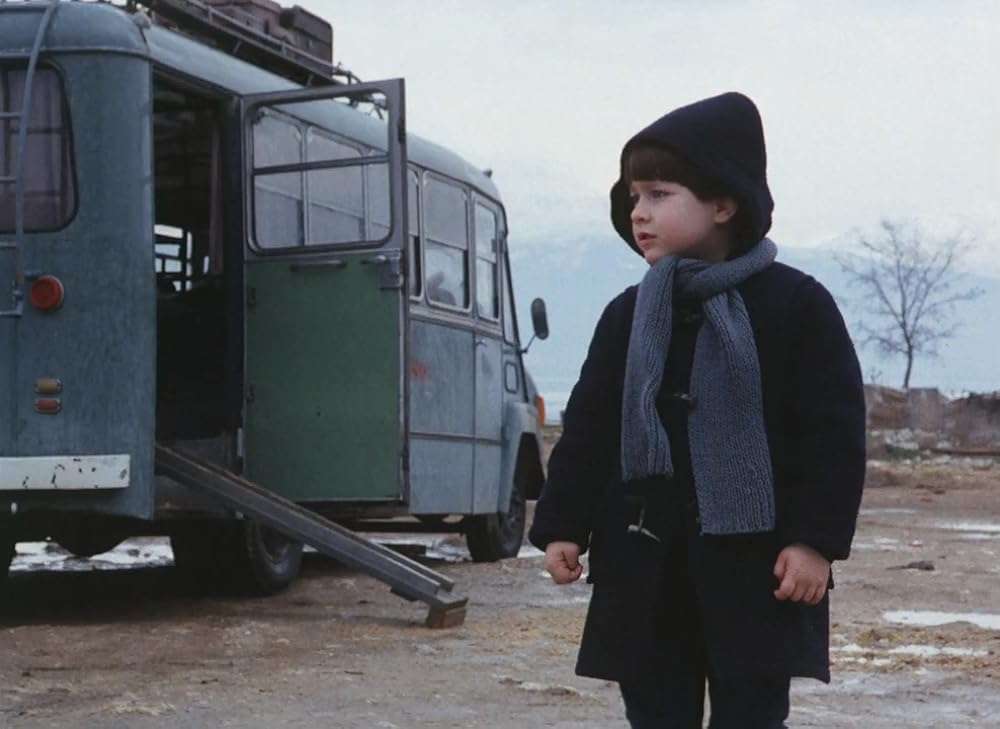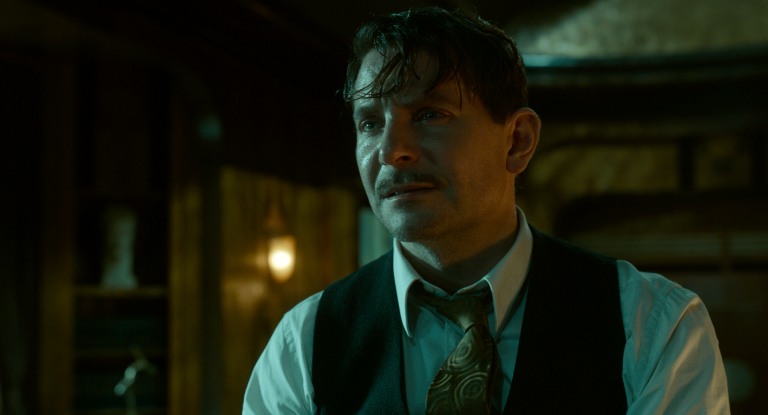A Brief Analysis of Landscape in the Mist (1988): Greek auteur Theo Angelopoulos’ films do not deeply take us through the material levels of human relationships. They are rather journeys into the innermost recesses of human minds. Through his films, he expresses the concerns of the average human being who, at the same time, longs to get away but is unable to due to being trapped in the diplomacy of relationships. These are the extraordinary mental travails of ordinary men trying in vain to escape the cobwebs of relationships and memories.
Angelopoulos also undertakes the monumental task of reconstructing a country’s biological and historical environment that lives beyond human relations. Inquiries into the role of humans in shaping history always lead Angelopoulos to a confrontation with the state. This often exerts an influence on his filmmaking. This anti-government behavior during his school days even led to his expulsion from the institute where he studied. The films of Angelopoulos go through many eras. In the same movie, the past, the present, and the future will appear intermingled and disrupt the straight line of history. In fact, he emphasizes that the memories of humans are beyond time.
Angelopoulos’ works are journeys in search of the identity of his own country, Greece. He gained international recognition when the film “The Travelling Players” was screened at the Cannes Film Festival in 1975. “The Travelling Players” was not Greece’s official entry at Cannes. The Greek government at the time banned Angelopoulos’ film from being screened at the festival. Nevertheless, the film was smuggled to the fair. After the film screening, the famous German filmmaker Werner Herzog is said to have come to Angelopoulos, knelt in front of him, and kissed his hands. It should also be remembered that it was a nearly four-hour-long movie. The film also won the FIPRESCI award. It is said that the rules of the Cannes Festival were rewritten to give this award (the rule is that only official entries can be awarded at the Cannes Festival).
Angelopoulos’ movies – made fourteen feature-length films are primarily divided into four trilogies: History, Silence, Borders, and Modern History. “Landscape in the Mist” (1988) is the last film in his “Silence” film trilogy. Moreover, the trilogy “Silence” is divided into three parts—the silence of history, the silence of love, and the silence of God. “Landscape in the Mist” is included in the silence of God. The heart of the film is the journey of two children – Voula and Alexandros, who are sister and brother, traveling to Germany in search of their never-seen father. Through this voyage, Angelopoulos paints a critical picture of the development and evolution of Greek culture, history, and political structure.
The siblings don’t know their father or even if he is alive. They learn the story about their father from their mother, who never appears in the film. It may be true sometimes, or it’s simply a lie that the mother concocted a tale to indoctrinate her children. We are not even sure that both of them have the same father. Maybe those children were just two gifts someone gave her during her difficult journey. It is also noteworthy that the children’s uncle denies the existence of a father.
We can understand that the mother who once disturbs their sleep like a shadow figure only represents their sense of security. Angelopoulos is trying to tell us that these children are running away from the protection of someone who never appears in search of a lie or myth. This may be a symbolic analysis of the contradictions of the Greek people.
There is another father in the film who never appears. He is the grandfather of Orestis, the actor in the theatre company. Orestis is the dramatist whom the children meet on their travels. His grandfather decides the final fate of his theatre company. Opposing their decision to sell all the theatre equipment, others in the troupe tell Orestis that it was his grandfather’s decision. When he asked to see his grandfather, he was told that he was ill. Angelopoulos tells us that the figures of authority stand aloof from the people. The father and grandfather in the film are the people who are the final judges of the power system. They remain an invisible force controlling everything without revealing themselves.
Along with this father symbol can be read a giant palm statue rising from the sea. Its distinguishing feature is its missing index finger. The index finger always represents purpose. Through this scene, Angelopoulos also presents the Greek society that has lost its sense of purpose. The children’s journey in search of their father begins with doubt. Once they come to the station and return, they start their journey by taking permission from a fictional character in a place where borders are fenced off. Be it God or someone else who determines their fate, they are placing responsibility for their fate on something unknown. They are finally embarking on that inevitable journey. The siblings hug each other and rejoice.
Children’s transnational journeys indicate national calamities. Children fleeing from Syria, West Asia, and elsewhere are considered symbols of the unrest and insecurity prevailing in those countries. The memory of the labor migrations to Germany in the 1980s prevails strongly for Greece. Angelopoulos may be hiding these immigrant memories behind the children’s escape story. These immigrants sowed the seeds of communism in East Germany after World War II.

But Voula and Alexandros’ journey was not so smooth. Most of the time, they face unforeseen obstacles. Arrested for traveling without a ticket on the train, they again try to travel without a ticket and run away to avoid being caught by the police for the second time. The children’s journey in search of their father feels as if they are leaves blown by the wind. During the trip, they also share concerns about the strange world, their fears, dreams, and worries. Angelopoulos shares the revelations of human anxieties about the future through these sentiments.
The children encounter strange and dangerous experiences on foot, in vehicles, motorbikes, and boats. We witness a bride running away from the wedding and the tractor pulling the dying horse. All these give indications of the unpleasant atmosphere of modern Greece. Alexandros wails in front of the dying horse, and the wedding party tramples behind it, giving us the message of the heartlessness of the rapidly changing society.
Dramas and theatres are a constant presence in Angelopoulos’ films. That is because dramas are closer to life. Cinema is a magical world. It is often false and misleading. A great example is the sense of falsity created by the lion heads displayed between the scenes of the Odessa steps. A film can subvert the audience’s consciousness by inserting another scene in the middle of one scene. But this is not possible in dramas. The characters are spread through unedited scenes. Their unique performance interacts with the audience in real-time. We can assume that the theater/drama gradually disappears during the regimes that are not strong enough to face the truth. The theatre troupe’s disappointment at being unable to find a stage and Orestis saying that his grandfather would die if he didn’t find a stage indicate the biological connection between drama and life.
It is also stated that the modernized or changed Greece does not want theater. The hotel owner kicking out the violinist is also a memorable scene here. In fact, the plays and actors humanize Angelopoulos’ films. Theatre stages and troupes are active in movies like “The Beekeeper” and “Voyage to Cythera.” “The Travelling Players” begins with a stage. Later, the film’s journey starts from where the troupe moves to the next stage. The same troupe is in “Landscape in the Mist ”. They even lose their chance when a dance party rents the stage given to the theatre company for a considerable amount of money. Finally, the film shows them selling their theatrical wares. It is also an indicator that contemporary society demands illusions instead of truth.
The sea is a constant presence in Angelopoulos’s films, as are his theatrical stages. Beaches and harbors appear in almost every film of his as symbols of man’s many journeys and struggles of the soul. On some occasions, he frames the sea open to the sky to symbolize man’s endless dreams. It is on such a beach that the drama group is going to sell their drama materials.
Characters walking through the shadows of huge buildings and machines are often seen in the movie. We see such scenes in many places, such as when the police are arresting Voula and Alexandros, the moment when the drama committee members first appear, and the scene when they get off the train. These scenes point to the helpless condition of the people who have to stay in the shadows of the vast industrial complexes built by the modern industrialized society. Furthermore, it signifies the helplessness of humans who are reduced to the shadows of super-materialism.
Voula and Alexandros see Orestis twice. But between both scenarios, significant changes have taken place. Voula says that Alexandros has become a grown man. Voulak also changed, carrying the trauma of the sexual assault. On a film strip found by Orestis on the way, they envision a lone tree standing in a snow-covered field. Although they do not see anything, they imagine so. Angelopoulos suggests at the outset that it is in a similar place that Voula and Alexandros arrive at the end of the journey.
But this tree is only a symbol. They reach that place the next day after the gunshots we hear on the boat trip to Germany. We can only guess what happened to Voulak and Alexandros after the shooting. However, they arrive at the foot of a single tree, which can be considered a symbol of the redemption of life. It could be regarded as a symbol of God. Perhaps that is why this film is called “Silence of God.” At the end of all journeys, this possibility of salvation should be considered.
In Angelopoulos’ films, the same characters appear repeatedly. That way, all his movies can feel like a continuation of one. Alexandros, Orestis, and Spyro appear again and again. Angelopoulos’ “Landscape in the Mist” offers a social, political, and philosophical insight into Greece tucked into the film’s impassioned and haunting lyricism.


![Dark Waters [2019] Review– A Conventional yet Compelling Account of Toxic Chemical Pollution](https://79468c92.delivery.rocketcdn.me/wp-content/uploads/2020/01/Dark-Waters-2019-768x567.jpg)




